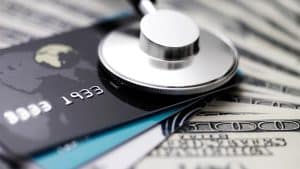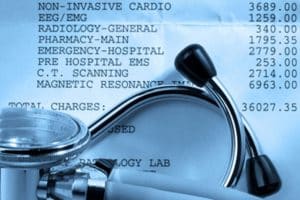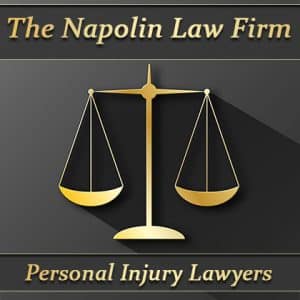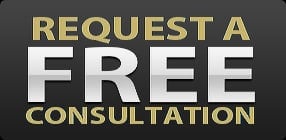
Proving Personal Injury Damages with Medical Bills and Receipts
Establishing that somebody else acted in a careless manner does not entitle you to damages. One must additionally prove injury. To prove injury and collect damages, it is necessary to establish the financial consequences of the injury. The financial consequences are known as the special damages. Establishing special damages requires proving personal injury damages with medical bills and receipts. These are the objective basis for showing the actual costs incurred as a result of an injury caused by the careless acts of another person. The pain and suffering is known as general damages and are often established as a multiplier or in proportion to the financial consequences of an injury. It is therefore of the highest importance to keep documentation to establish special damages in a personal injury insurance claim or lawsuit.
Documenting Traffic Injury Medical Bills With Receipts
Medical Bills and Receipts After Car Accident - It is of the highest important to document medical bills with receipts after an a traffic accident. These receipts resemble the proof that the expenses were in fact incurred and can be used as exhibits later at trial to prove reimbursement. Receipts can also be used to prove that medical services were in fact rendered at a given date and time. This helps prove the size of the case to improve pain and suffering damages at trial. Unless amounts paid for medical bills are documented with receipts that are kept secure, it can be difficult or even impossible to show the insurance company or later a jury that the expenses were incurred. Fortunately, in many instances medical offices and health insurance carriers keep documentation of bills that can later be collected and introduced to the adjuster or to jury. But sometimes things happen such as bankruptcy of a medical office, so keeping a copy for yourself is always a smart idea.
The difference between medical bills and receipts is in the differing information provided within a bill versus a receipt. Both receipts and medical bills submitted by individuals and entities that provided medical services and supplies can be used in trial. An award for damages however, needs more than just the medical bill, because alone, the document is not enough to prove the amount actually expended for the medical service. Therefore, the injured person or the plaintiff should always be prepared to establish the amount paid via receipt for amounts expended to cover the bills.
Ways to Get Medical Bills and Receipts into Evidence at Trial
If testimonial evidence is used to establish the authenticity and nature of a medical bill or receipt, a proper witness must attest to authenticity. Authenticity can be established via testimony. n evidence, medical bills are exhibits and may be admitted as exhibits in two ways: by stipulation or by testimony. A stipulation is where both sides agree to admitting the evidence. If testimonials were used, then these exhibits may shown through the testimony of: 1) The billed person; to witness that these bills were received for the treatment or the services provided; 2) The person that issued the bills; to witness that they were charged for the treatment or services provided; an 3) The issuer’s record keeper; to witness they are the original copies.
Establishing Medical Bills Were For Reasonable and Necessary Treatment
In addition to proper record keeping, the plaintiff needs to be prepared to prove the following regarding those traffic collision medical bills. Reasonableness and medical necessity can be established in three main ways, sometimes requiring a combination of all three. The following explain what helps establishing medical bills were for reasonable and necessary treatment.
- That the charged amount was in fact reasonable. Usually, the injured person or the plaintiff does not have to prove that he/she paid for the treatment. However, proving that helps establish that the amount of charge was reasonable.
- That the treatment was provided for an injury that resulted from the defendant's wrongful act or omission.
- That the services provided were in fact necessary for the treatment of the condition
In the case that treatment or services provided were unrelated to the injury or condition, then these should either be marked clearly as unrelated or deleted completely from the bill. This is important because the jury may believe that you are overreaching which will significantly affect the damages award.
Types of Testimony Necessary to Show Reasonable and Necessary Treatment

- The foundation for bills and receipts introductions through testifying about doctor visits, medical bills and receipts from these visits;
- The nature of the injury as experienced by the injured person;
- That the injury or condition is caused by the defendant's tort;
- The nature and details of the medical services and supplies as understood by the injured person;
- The amount of bills he/she received for these services;
- Evidence that these bills were reasonable through bills’ payment.
Although it is not always the case, an injured person’s testimony can sometimes be sufficient for an award for medical expenses. However, experts’ testimony may be required to validate that. If the injured person did not receive the bills, then someone else’s (eg. doctor) testimony becomes a must. If the injured person received but did not pay for the bills, then evidence that someone else paid may be shown. Where the plaintiff is not the injured plaintiff but is the one testifying then he/she can testify about:
- The nature of the injury and the treatment given as observed;
- Medical bills received by the injured person; and
- Payment of bills as evidence of reasonableness
Medical experts such as doctors and other practitioners. A testimonial about the necessity of medical treatment and services provided can be done through the injured person’s own doctors. They can testify that the bills represent charges for these services. Such testimonials can also prove necessity to recover the expenses. A medical expert including a licensed physician can testify that:
- The services and treatment provided was necessary for the condition or injury;
- The charges were also reasonable for the services provided;
- There is reasonable certainty that the injured person needs these services; and
- The trauma that is described can cause injuries like those claimed.
A medical expert who actually treated the injured person can testify about:
- The nature of injuries;
- That the claimed trauma caused the injury;
- The treatment prescribed and provided is reasonably necessary; and
- The amounts of charges for these services.
Any expert with the knowledge and training on medical costs and expenses such as an economist can testify about their the medical expenses, including the probable cost and the trends of the services. These testimonies become very useful during settlement negotiation. You can also obtain these through a computer generated statistics and medical schedules used by government providers like Medicare. Hence, it does not always require an expert to testify.
Family Member or other Provider of Services
Anyone who provided service to the injured person whether that person was a family member or a hired individual can testify to the services provided in terms of their nature and duration. If the service provider is a trained professional, then his/her testimony will be enough to testify about the reasonableness of the services bills and charges. However, if the provider is not a trained professional, then their testimony may have to be accompanied with a physician or economist’s opinion.
Hire A Personal Injury Lawyer to Prove Your Case At Trial
A knowledgeable and experienced personal injury lawyer can help prove your case at trial. In all circumstances it is necessary to collect records and bills and to save as many receipts as possible. If you are the victim of automobile accident, consult with the best attorneys in Southern California, for free! The Napolin Law Firm is a powerful group of the most knowledgeable attorneys who fight the insurance company in trial. Get a hold of us and speak one on one with a trial lawyer today. Dial 909-325-6032 for quick attention to your needs.


